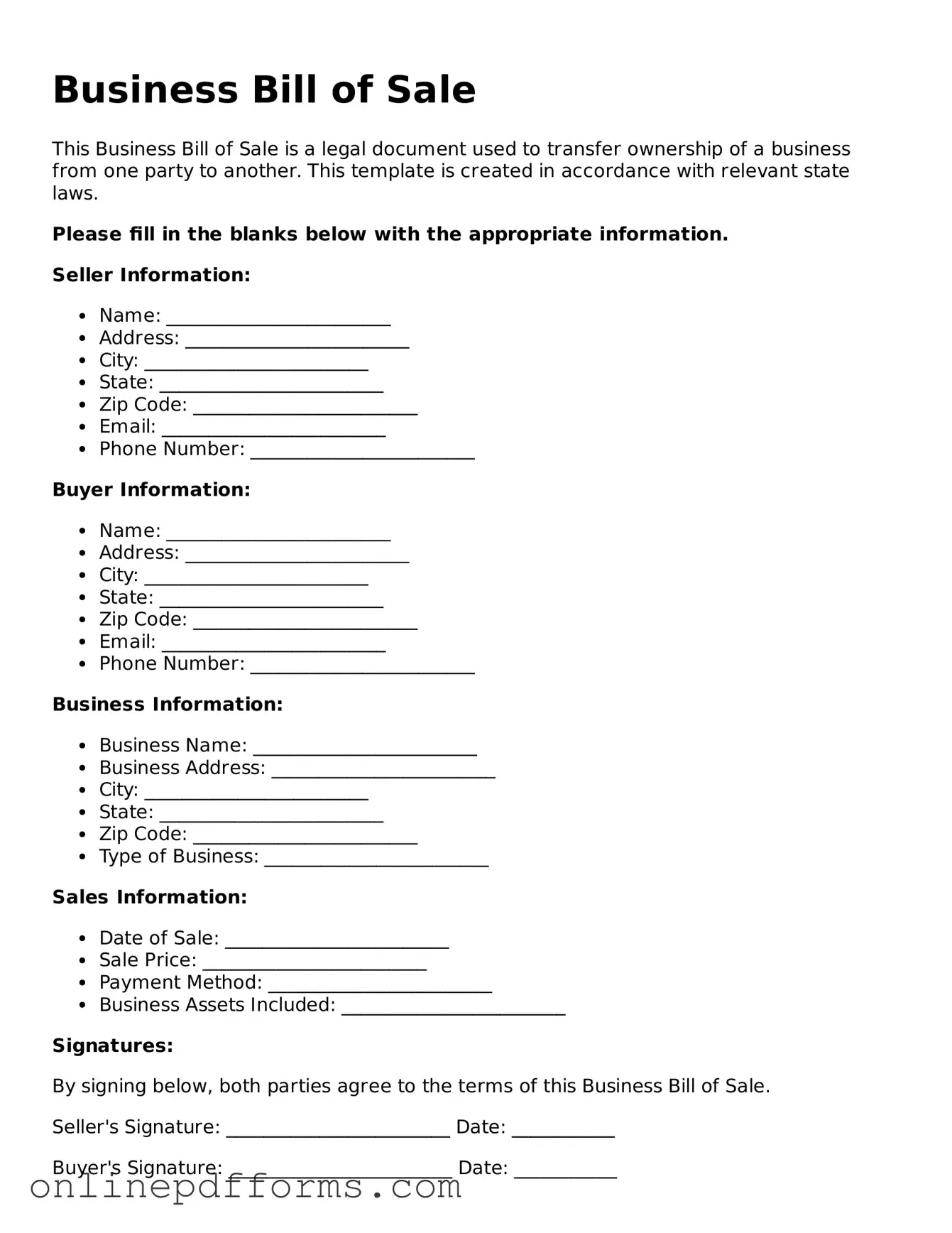The Business Bill of Sale form is similar to a standard Bill of Sale, which is commonly used for the transfer of personal property. Both documents serve as proof of a transaction between a buyer and a seller. They typically outline the specifics of the sale, including the item being sold, the sale price, and the date of the transaction. The standard Bill of Sale is often used for vehicles, equipment, or other tangible items, making it a foundational document in various sales contexts.
In the context of purchasing a motorcycle, it's essential to have a comprehensive understanding of related documentation, particularly the Motorcycle Bill of Sale, which serves as a key legal record in these transactions. Buyers and sellers should ensure they are aware of their rights and obligations when completing the sale, making sure to fill out all pertinent details correctly. For those interested in obtaining a Motorcycle Bill of Sale, resources such as https://motorcyclebillofsale.com can provide template forms that assist in making the process smoother and legally sound.
Another document akin to the Business Bill of Sale is the Purchase Agreement. This document details the terms of a sale, similar to the Bill of Sale, but often includes more comprehensive information about the transaction. A Purchase Agreement may cover contingencies, payment methods, and warranties. While the Business Bill of Sale finalizes the transfer, the Purchase Agreement often serves as a preliminary step, outlining the expectations and obligations of both parties before the final sale occurs.
The Asset Purchase Agreement also shares similarities with the Business Bill of Sale. This document is specifically used when a business is sold, detailing which assets are included in the sale. It goes beyond just the physical items, often encompassing intangible assets such as trademarks, customer lists, and goodwill. Like the Business Bill of Sale, the Asset Purchase Agreement serves as a formal record of the transaction, but it provides a more detailed framework for the transfer of a business's assets.
Lastly, the Lease Agreement can be compared to the Business Bill of Sale in terms of its function in business transactions. While a Bill of Sale transfers ownership, a Lease Agreement outlines the terms under which one party can use another party's property for a specified time. Both documents require clear terms to protect the interests of both parties. They establish rights and responsibilities, ensuring that all parties understand their obligations during the duration of the agreement.
